A Celebration of the Wonder of the Universe Itself: Vast by Linda Nagata
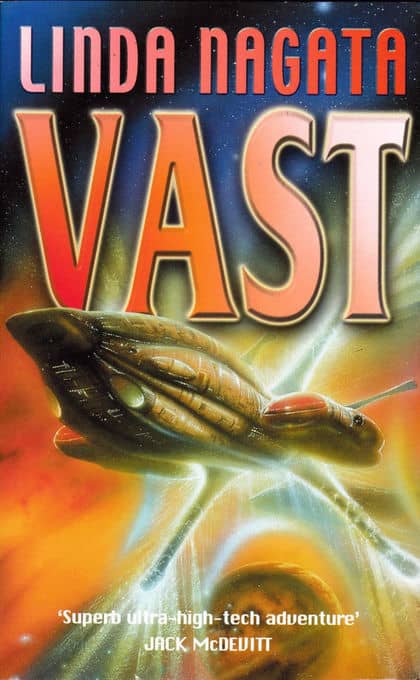 |
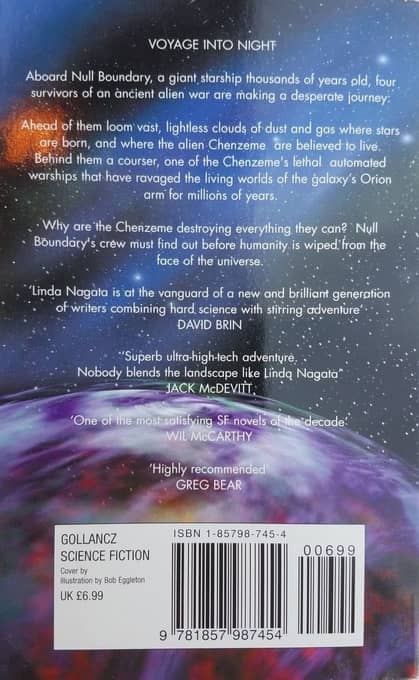 |
Gollancz edition (1990); cover by Bob Eggleton
I’ll get right to it: Linda Nagata’s Vast is everything you want epic sci-fi to be: a huge scope in time and space, a compelling look at the horizons of human and technological evolution, and a celebration of the wonder of the universe itself. Vast provides all this, with some truly beautiful descriptions of stellar evolution thrown in for good measure. On top of all this, this scale and big ideas are woven alongside excellent character formation and a plot that builds tension so effectively that long years of pursuit between vessels with slow relative velocities still feels sharp and urgent.
I liked this book. A lot.
Vast is set in the far future, after multiple waves of colonization have moved out from Earth (which has since itself been destroyed). Humanities’ settlements along the frontier have been ravaged by twin threats from an ancient lost race called the Chenzeme: automated, partially biological warships and an engineered virus that turns its hosts into carriers of a cult that enslaves entire populations. Humanity, it seems, is being squeezed between these two prongs of an incredibly ancient civil war with weapons lingering on even after the civilization that wages it is long gone.
But there’s a whole lot going on against this epic background. Vast is actually the concluding book in a series that includes three others (one of which is the Locus Award-winning Deception Well) but I didn’t realize this when I picked up the paperback edition this summer in a used bookstore when my vacation reading supply tanked. The plot picks up with four characters — Nikko, Lot, Urban, and Clementine, all human — on a starship called the Null Boundary heading into Chenzeme space. Starting with the final book means I missed all the details of how these characters originally met, how they learned Lot was a carrier of the cult virus, and how they ended up on the Null Boundary, but it didn’t decrease my enjoyment of the book. Sometimes it’s nice to be dropped in the middle of an unfamiliar universe to figure things out as you go. (I remember starting Gene Wolfe’s Long Sun quartet for the first time with the third book and being simultaneously confused and enthralled.)
[Click the images for vaster versions]
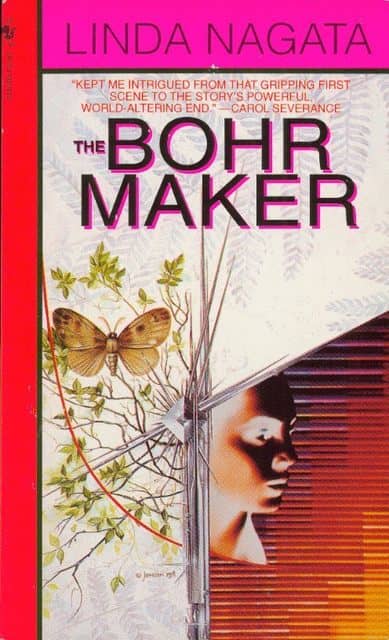 |
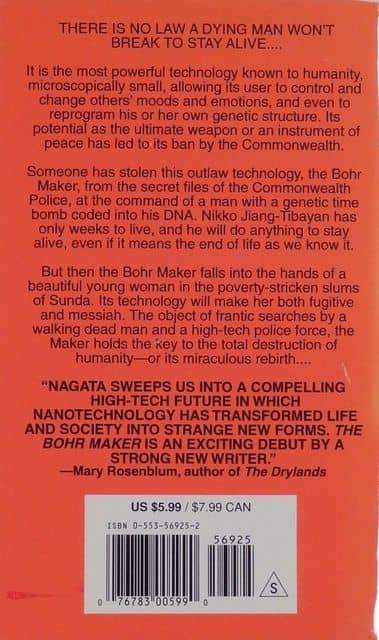 |
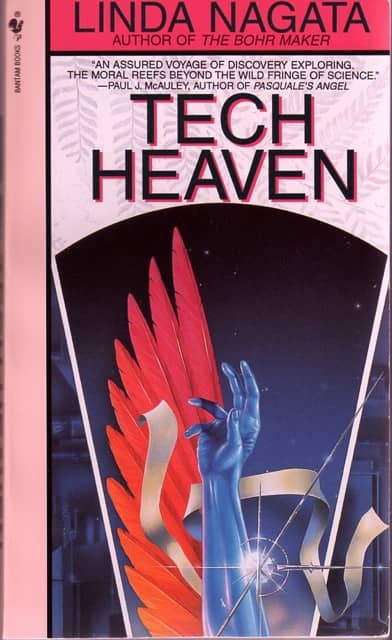 |
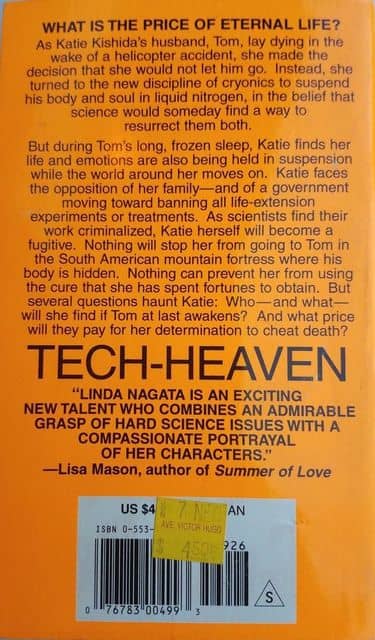 |
The first two novels in The Nanotech Succession:
The Bohr Maker (1995) and Tech-Heaven (1995).
Bantam Spectra editions; covers by Bruce Jensen
The characters and technology make the novel, which for the majority of the plot is simply an extended chase scene, so memorable. I’ll start with the characters. Nikko is something so advanced as to at times seem barely human, a centuries-old intelligence inhabiting the ship and taking embodied form at will, distant from his humanity but trying not to lose it completely. Technology aspects though mean all of the other characters feel a bit more than human as well; they all have the ability to replicate their own personalities (creating “ghosts”), which means that their consciousnesses are effectively immortal. If a body dies or is damaged beyond repair, a new one is synthesized (because the Null Boundary is advanced enough at a molecular level to synthesize anything, even aspects of its own structure). If characters have to leave a planet, they can leave a conscious aspect of their persona — a copy — behind. Death and leave-taking have been transcended, but Nagata explores the implications and costs of this throughout.
The characters Urban and Clemantine are more classically human than Nikko, but then there’s Lot. Lot is an engineered weapon, a blend of human and Chenzeme biology, and it’s Lot that allows the characters the opportunity to learn to fight the Chenzeme. Lot also gives the author the opportunity for imagining the nanotech of the far future. And that technology, painted in rich descriptions that make the prose of Vast glitter, is in the microcosm, in the cells and their chemical communications. The hull of Null Boundary holds a colony of Chenzeme “philosopher cells,” and a primary plot point is Lot learning enough of this biochemical tech to allow their ship to masquerade as a Chenzeme warship. This is more difficult than it sounds, as the Chenzeme ships interact like living bodies, mating and dropping dust to exchange molecular memories and signals. Even their propulsion systems are generated at a cellular level, formed by a sort of mitochondrial engine that has colonized the ship. Lot is a bridge to all this, as he has the ability to communicate at a cellular level with these cell lines by exchanging scent-like “charismata,” packets of cellular info released on the air (or into space) like spores or pheromones.
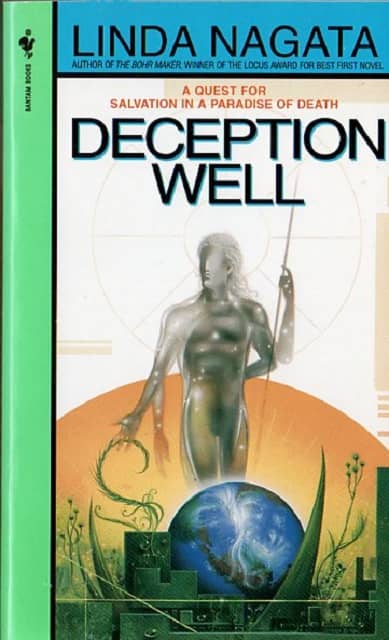 |
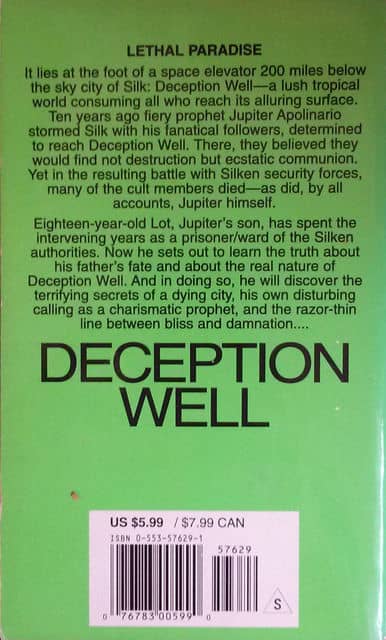 |
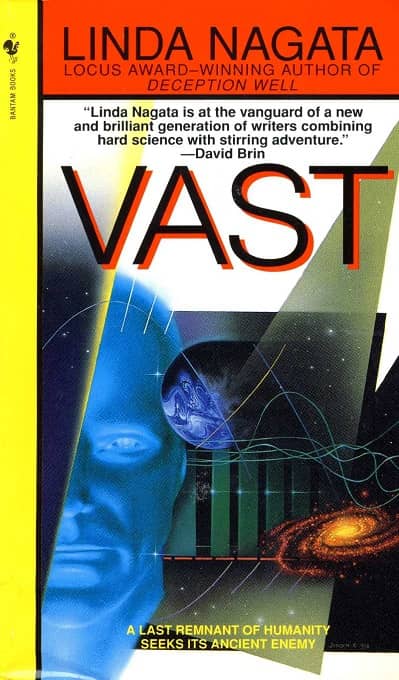 |
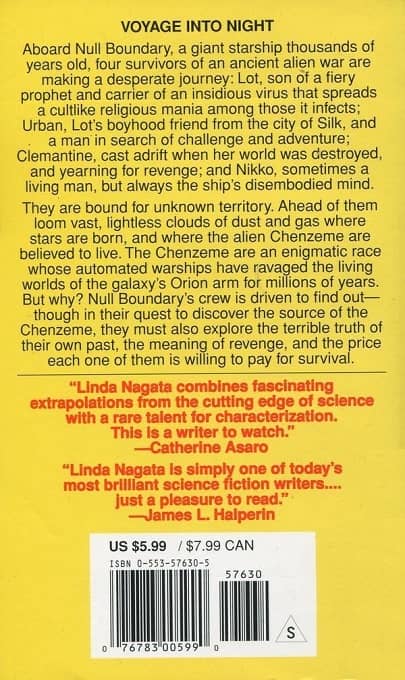 |
The last novels in The Nanotech Succession:
Deception Well (1997) and Vast (1998).
Bantam Spectra editions; covers by Bruce Jensen
Communication and communion are themes throughout the work — how to translate human thoughts into an alien chemical language, how to build a link to the Chenzeme without losing one’s own humanity, and whether that should result in war or communion. Lot is the fulcrum of all this, with his crewmates forming a counterweight to his internal craving to spread the cult virus. It’s a compelling struggle, and Lot the weapon becomes the most relatable character, even when his nature drives him to despicable acts. Nagata is masterful at using these characters to create an isolated society on the Null Boundary, even as they procreate, grow, and have children who age into new characters — and ultimately find a lost colony of humanity so rich with its own characters, settings, life forms, and culture that Nagata could easily spin off into another entire novel.
But it’s the vastness beyond all this, beneath all this, that makes it so stunning. There’s something of Benford’s Galactic Center series here, but executed more successfully by Nagata, I think. Time and communication are immense, and for most of the book Nikko, Lot, and the others are isolated on the ship, moving in and out of cold sleep on a chase that lasts decades. The sense of mystery and expectation as they venture into the area of space from which the Chenzeme warships have come and where Lot hopes to learn the truth of his origins is sustained throughout the entire novel.
In the end there are answers, though complete answers would be too trite and belay the scales involved. But there is, more importantly, resolution, though it’s bittersweet — and perhaps would have been more so had I followed these characters through multiple novels — but one laced with hope, closure, and plenty of room for another novel.
Stephen Case has published fiction at Beneath Ceaseless Skies, Orson Scott Card’s Intergalactic Medicine Show, and Daily Science Fiction. His reviews have appeared at Fiction Vortex and Strange Horizons, as well as his own blog, stephenreidcase.com. His last article for us was a review of Erica Satifka’s Stay Crazy.
[…] (16) NAGATA PRAISED. However, at Black Gate Steve Case finds plenty of good things to say about a book: “A Celebration of the Wonder of the Universe Itself: Vast by Linda Nagata” […]